What is Kul.turista going to do in 2024?
Before Easter, the first meetings of a series of educational workshops (capacity building) took place as part of this year's Kul.turista. Especially for the city communities and then the Platform 28 Houses organizations. Several representatives of a total of six communities/organizations gradually met around one table, presented and developed their projects together, shared their visions and plans, and gave their feedback.
Kul.turista in the CITY
By supporting cultural activities of the residents, their creative and artistic expression, Kul.turista becomes an opportunity for everyone to participate in the European Capital of Culture program. Kul.turista promotes community and neighborhood events, which in turn will enrich and expand the cultural offer in the more peripheral parts of the city, making it more accessible and at the same time they allow a new perspective on the place where the residents live, or enliven it, or populate the public space.
Kul.turista's long-term goal is to build strong and self-reliant communities and resilient neighborhoods - to nurture and support them.
The selection of participants/communities included in this year's Kul.turista program was based on an open call. The communities applied to the open call with their project plans. These will be finalized and developed throughout the year, taking inspiration from areas such as working with artists, public engagement, sustainability and accessibility. In this way, communities will take their events and outcomes to a great and much higher level - while doing so responsibly and within the bounds of possibility.
1. Linecké předměstí - Povltaví community with a community garden development project.
It was formed last year on the premises of a local school (Grünwaldova Primary School). They want to transform their garden into a meeting place, suitable for neighborhood activities and to make it a more comprehensive (cultural) program in terms of concept. They want to involve more local students in their activities in the future. A part of the program of the annual summer neighborhood festival should also take place in the garden. One of the challenges which the community is facing is to come up with a new and satisfactory name for their neighborhood, which the local residents do not currently identify with.
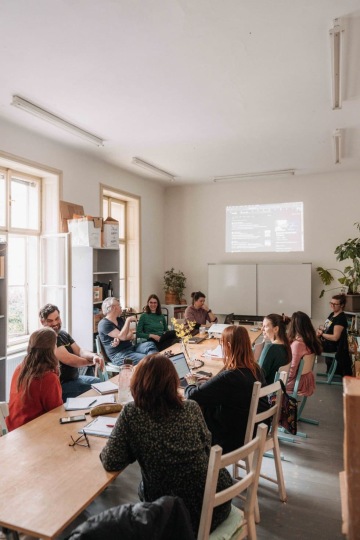
2. Sousedé z Havlindy (Havlinda Neighbors) community with the Živá paměť Havlindy (Havlinda Living Memory) project.
A sophisticated project that engages old-timers and collects the memory of the neighborhood. They are looking for the ideal way to capture the stories and continue to tell and present them to the public. A very proactive and member-rich community - but how not to get overwhelmed and do things for fun?
3. The community of Smetanka residents with a project to revive the street (B. Smetany Street).
A "one street" community in the suburbs of Prague that strives to work with and involve all its residents. They decide where and how to meet, what activities and what form of activities are suitable for them and what needs are the most important. How to turn neighbors into partners? How to make the street a place that pleases more than just its residents? Can it offer relaxation and at the same time small, attractive and appropriate activities for all residents - maybe even for the rest of the city?
4. The Kaliště Třebotovice Residents' Association Setkání rodáků (Natives’ Reunion) project in the ceramic workshop, together with a physical record of the history of municipalities, the landscape and its beauty in the form of a guided walk.
The association has been exploring the history and landscape context of the two municipalities for a long time (over twenty years). They plant avenues and restores roads. But how to engage newcomers and young residents in the activities, what form to use and how to bring them closer to the place of their common life? How to get beyond the fences, how to make the firehouse or the ceramics workshop a meeting place for all the local residents? And how and why to make their activities known to all people of the city which they are official members of?
5. hROM CB with C-book project.
C-book is a catalogue or maybe even a book full of inspiring personalities. It can become a tool for understanding "other" cultures, serving as a tool for intercultural dialogue and connection. It can be lectures, worksheets, talks, workshops, and music, or dance... But how not to get lost in the endless inspiration and possibilities this tool offers? How to approach the project responsibly and in a way that works for all members of the Máj community?
6. The possibility to participate in the Kul.turista meeting was also given to the Salesian Centre for Children and Youth in České Budějovice with a clubhouse project in the square at the Vltava House of Culture.
The clubhouse will offer program s for children and young people, having ambitions to connect to the local community of the Vltava estate. To create a safe meeting place and provide an attractive space for activities not only for older children. At the same time they would like to revitalize the emptied square.
A total of five meetings for communities will take place in 2024 as part of Kul.turista. Step by step, they will get familiar and improve their skills in various areas important for their functions, develop their skills, and master the tools needed to function independently. But they will also try out new things - invite artists to join their activities, share experience, test new possibilities and ways of operation and leading projects. They will inspire each other and move forward to have space to share. Together they will gather new experience and gain determination to change things, take matters into their own hands and not be afraid of change, to test and listen to other opinions.
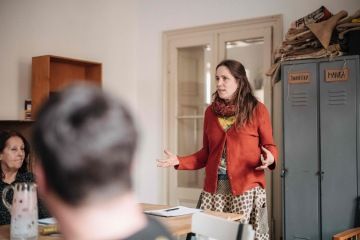
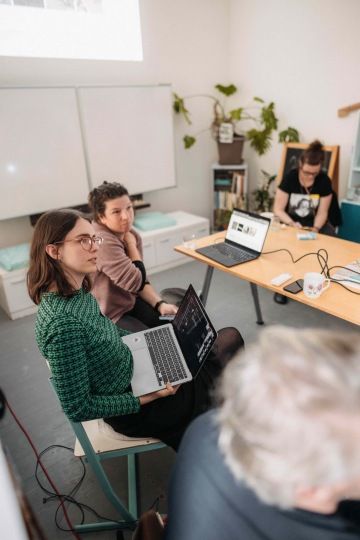
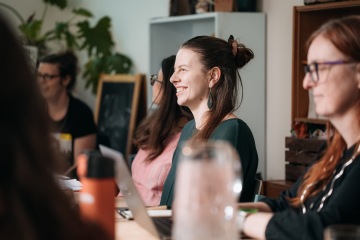
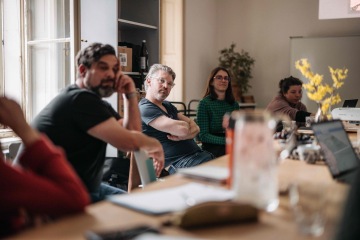
Kul.turista in the REGION
Kul.turista also supports the region's independent cultural organizations in their work with communities in their locations - this is done through the 28 HOUSES platform. It is these organizations that are closest to local people or understand the needs of local communities or create communities of their own.
In the open call we have selected five of them that will test the Kul.turista program in the region this year.
Živá vila (Living Villa) - Prachatice
- with a White Wigwam community garden project. Kral's Villa has built an incredibly strong community of people who want to save it and highlight its uniqueness and potentials. They are now looking to expand the area of the former orchard/garden behind the house, which the community would like to make available to the public. "They want to turn it into a little paradise, a place where people feel comfortable as well as members of the community and visitors to the villa". The Prachatice-based non-profit organization Stroom Dub, which integrates people with intellectual disabilities back into society, has already joined the gardening work and the activities in the garden are extremely valued by the clients.
Kraffer's Garden - Jindřichův Hradec
- which has gone from being a non-ordinary garden center to a meeting place for locals and is looking to become more and more open. How can we better involve locals? How to reach out to young people and children? How to tell the story of place? How to develop and build the place's program and how to nurture its own community?
Naplaveno - Jistebnice Region
- with a Connected by Landscape project - the topic of which is protection, preservation and respect for the landscape. Through rambles, walks or expeditions, a group of people are discovering the landscape just outside their doorsteps and beyond in a new and distinctive way. Who does it belong to? And how to own it? How will it be interpreted by a semi-open group of poets, illustrators, photographers / artist-walkers? What feelings might it evoke? And how can the Jistebnice landscape be grasped, felt and experienced by us as viewers looking at the outputs / map / exhibition? Protection and respect for the landscape.
Slavonice Community House
- a project dealing with architecture, design, public space and landscape. A location with lots of experience in the subject and overlapping topics such as economy, sustainability, or ecology. They organize cultural events and exhibitions. But are they successful in raising local interest in public space and its interpretation through systematic education? What should be built in the public space and why, and how to involve locals more in this debate?
Táborská Jednota na Cestě (Tábor Unity on the Road)
- the residential and cultural-community space of Ctibor's Mill, which comes to life and forms a unique place called the Road. The cultural events that happen here, community housing or even the garden, which generates a variety of food, are available to all the people of Tábor. The topic of independence and self-sufficiency provides a great basis for planning the regular cultural program, but the location could also inspire other artistic activities, the residency participants, thus encouraging more inspiration and connections.
Hoprich Parish in Broumov also takes part in the program and they work together with Villa Strooikaas on a community project:
How to get inspired and connect with organizations from South Bohemia? Through Kul.turista! The project will be funded directly by Česká spořitelna, but the transfer of experience and inspiration that are valuable for organizations from both regions allows to share everything throughout the year.
Three meetings and workshops are planned for the region, focusing on strengthening work with communities, the use of cooperation between the community and the artist/creator - their involvement in the process of creation, participation and participation of local residents in the shaping of the program , their opportunities for involvement, but also mutual inspiration, connecting organizations and sharing (needs, topics, experiences).
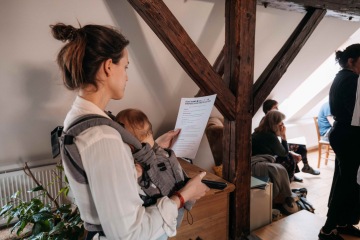
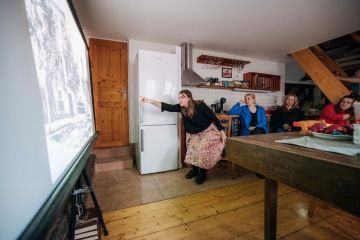
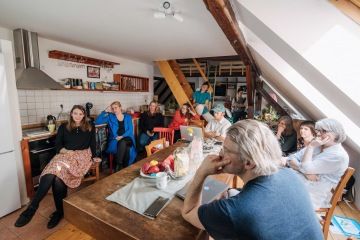
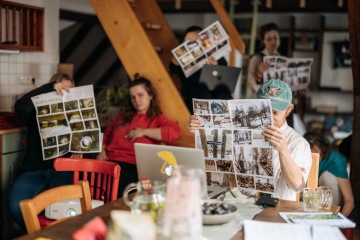
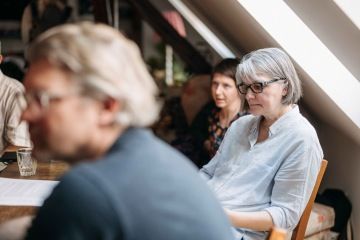
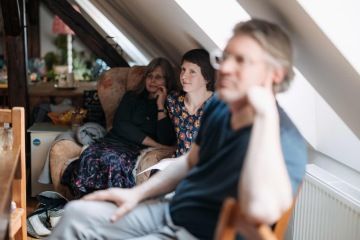
Kul.turista until 2028
The Kul.turista project and program has and will continue to involve organizations and local communities throughout the region. Each year we will invite residents to organize their own events and projects, which the European Capital of Culture will support through a series of educational workshops. This will result in approximately ten local events taking place throughout the South Bohemia Region every year in the Kul.turista framework.
We will open a call for 2025 in autumn 2024.
Their involvement in the Kul.turista program also allows the city's communities and the regional organizations to discuss specific projects throughout the year, developing them into collaboration with the artist - an important topic for the European Capital of Culture, taking systematic community work to a different and unique level. Consultations will also take place this year - with Ondřej Horák, the Kul.turista project curator, lecturer, author of exhibitions, educational and socially engaged projects, and the promoter of contemporary visual art and participatory approach in art.
An integral part of the program is the mutual inspiration of participants, sharing experience and networking - Kul.turista will continue to create opportunities for this in the years to come. In addition, it aims to gradually connect communities from the so-called tripoint (South Bohemia, Upper Austria and Lower Bavaria) by 2028 so they can get to know each other through community and cultural events, exchange ideas and learn from each other.

